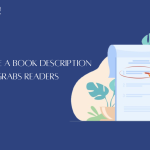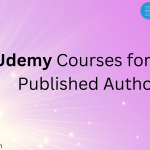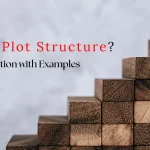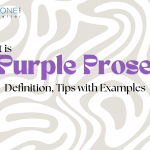Ever come across a sentence that feels like it’s flowing endlessly, filled with “and,” “or,” “but,” and other conjunctions? That’s polysyndeton in action! Polysyndeton is a powerful literary device that, when used correctly, can add rhythm, emphasis, and emotional depth to your writing.
It’s one of those tools that can turn a simple list or a series of actions into something much more engaging and dramatic. Let’s dive in to learn what polysyndeton is, see some examples, and find out how you can use it effectively in your own writing.
You may also like: Footnote vs. Endnote: What’s the Difference and When to Use Each?
What is Polysyndeton?
Polysyndeton is a stylistic device in which numerous coordinating conjunctions (such as “and,” “or,” and “but”) are used in sequence to create an artistic effect. Unlike other structures that may exclude these words, polysyndeton intentionally includes them to lend weight and flow to a sentence.
Etymology and Origins
The name “polysyndeton” is derived from the Greek terms “poly,” meaning “many,” and “syndeton,” which means “bound together.” So, quite simply, it refers to the binding together of various pieces via conjunctions.
This approach has been utilized in literature for ages, imparting a rhythmic and even overwhelming aspect to writing that can mimic the natural cadence of speech.
You may also like: 10 Proven Strategies for Crafting the Perfect Book Title
Polysyndeton vs. Asyndeton: Understanding the Difference
It is easy to confuse polysyndeton with its close relative, asyndeton. While polysyndeton employs several conjunctions, asyndeton performs the opposite by removing them entirely.
Both strategies can produce distinct effects, but polysyndeton slows the pace of a sentence and emphasizes each piece, whereas asyndeton accelerates the flow and generates a sense of urgency or disorder.
The Role of Polysyndeton in Writing
Creating Rhythm and Flow
One of the most notable effects of polysyndeton is its ability to create a rhythmic flow in writing. This can mimic the natural patterns of speech and help convey a character’s emotional state or the pacing of a scene.
For example, repeating “and” can slow down the reader and make each item or action stand out, building tension or highlighting importance.
Enhancing Emotional Impact
Polysyndeton can also increase the emotional resonance of a sentence or paragraph. By assigning weight to each element in a list, the writer might achieve a more dramatic or strong effect.
This is especially useful for communicating emotions such as enthusiasm, wrath, or sadness, because each action or item feels like it adds to the total intensity.
You may also read: List of Top 10 Best Rabindranath Tagore Books of All Time
Examples of Polysyndeton in Literature
Classic Examples from Literature
Polysyndeton has been used by many great writers throughout history. In the Bible, for instance, polysyndeton is frequently used to give weight to lists and descriptions. In “Genesis 1:26,” the repetition of “and” emphasizes the power and multitude of God’s creations.
Shakespeare also used polysyndeton in his plays to great effect. In “The Tempest,” Prospero’s speech uses repeated conjunctions to emphasize the vast array of things he’s seen and done.
Polysyndeton in Modern Writing
In modern literature, authors like Ernest Hemingway have made effective use of polysyndeton. In his short story “After the Storm,” Hemingway uses repeated “and” to create a breathless, relentless rhythm that mirrors the chaos of the storm.
You may also like: Vellum Review: Definition, Feature and Pricing
Famous Authors Who Used Polysyndeton
William Shakespeare
Shakespeare’s use of polysyndeton adds a lyrical quality to his prose and verse. In plays like “Julius Caesar,” his use of this device helps to build tension and highlight the gravity of situations.
Charles Dickens
Dickens used polysyndeton to add a sense of abundance and detail to his descriptions. In “Bleak House,” his repeated use of conjunctions helps to convey the overwhelming fog that covers London.
Ernest Hemingway
Hemingway’s use of polysyndeton often added a raw, immediate quality to his writing, emphasizing the relentlessness of war or the intensity of an experience. His use of simple, repetitive structures mirrors the raw simplicity of human emotion and action.
You may also like: Ten Strategies to Handle Negative Reviews | BlueRoseOne
Polysyndeton in Everyday Language
Use in Speeches and Dialogue
Polysyndeton is frequently employed in speech and dialogue to emphasise each point being made or to provide the impression of natural speech patterns in ordinary language. Polysyndeton is a technique that politicians and public speakers use to highlight the various facets of their argument and give the impression that their speech is comprehensive and thorough.
Polysyndeton in Advertising and Media
Marketers frequently highlight a product’s characteristics or benefits using polysyndeton. Through the use of “and,” they may create the impression that every aspect is equally vital and significant, which will strengthen their pitch.
The Effect of Polysyndeton on Readers
Engaging the Reader
Polysyndeton engages the reader by adding rhythm and emphasis to sentences. This literary device uses multiple conjunctions, like “and” or “or,” to connect words or phrases, making the reader slow down and pay attention to each item in the list.
By doing this, polysyndeton can create a sense of urgency, excitement, or importance. It helps readers feel more involved in the text, making the writing more compelling and memorable.
Creating a Sense of Urgency or Intensity
Using several conjunctions, such as “and” or “or,” in quick succession to convey a sense of haste or intensity is known as polysyndeton writing.
This stylistic decision can heighten the drama of a piece and draw the reader’s attention to each item in a list, conveying to them a sense of intense action or emotion.
Polysyndeton slows down the tempo to highlight every detail, giving the reader a more vivid and engaging reading experience.
You may also like: First Person Point of View: An Essential Guide
When to Use Polysyndeton in Your Writing
Appropriate Contexts
When writing, polysyndeton works best when you wish to convey emphasis, rhythm, or intensity. When listing objects, actions, or ideas, for example, you can use this literary style to emphasise the abundance or overwhelm of elements.
A statement like “She ran and jumped and laughed and danced” is an example of how polysyndeton can be used to express energy or excitement. It adds a vivid, dynamic aspect to the language, which draws the reader in.
Genres That Benefit from Polysyndeton
Fiction genres such as fantasy, historical fiction, and literary fiction particularly benefit from the stylistic device known as polysyndeton, which involves the use of numerous conjunctions in close succession.
Polysyndeton can add to the pace of a fantasy story and evoke a sense of wonder or urgency. It can give historical fiction accounts of historical events a more dramatic tone.
Polysyndeton is frequently used in literary fiction to emote complexly and give characters’ thoughts and dialogue more nuance.
You may also like read: How to Get More Book Reviews in 2025: Proven Tips for Authors
How to Use Polysyndeton Effectively
Tips for Writers
Writers can enhance the emotional impact of their writing and establish rhythm by carefully selecting which conjunctions to repeat when using polysyndeton.
Polysyndeton should not be overused because it can make sentences seem convoluted and overwhelming. Rather, employ it to accentuate certain phrases or to increase the level of emphasis.
Try out several sentence constructions to strike the ideal balance and make sure the frequent conjunctions suit your writing’s tone and style.
Avoiding Overuse and Redundancy
It is crucial to steer clear of redundancy and overuse when employing polysyndeton. In polysyndeton, a writer uses conjunctions like “and” or “or” repeatedly to achieve a certain effect.
Using this strategy too frequently might make your writing feel cluttered and overwhelming, even while it can add emphasis or create a rhythmic flow.
Instead of only using polysyndeton to fill space with more words, consider using it sparingly at times when the repetition advances the message or tone of the writing.
Polysyndeton vs. Other Literary Devices
Comparison with Other Devices
Parallelism and asyndeton are two literary tropes that are frequently used to compare with polysyndeton. Asyndeton omits conjunctions to speed up the rhythm and create urgency, whereas polysyndeton uses several conjunctions to produce a feeling of overload or abundance.
Conversely, parallelism emphasises a point by using the same structure repeatedly in words or phrases. Every tool has a different effect: parallelism draws attention to balance, asyndeton can give ideas a sense of immediacy, and polysyndeton creates an impression of piling up or accumulation.
How to Choose the Right Device
Understanding polysyndeton is essential when selecting the appropriate writing tool. Using several conjunctions in quick succession, such as “and” or “or,” to emphasise points or establish a rhythm in your sentences is known as polysyndeton.
In contrast to other literary strategies like asyndeton, which eliminates conjunctions to move the narrative along more quickly, polysyndeton gives the language a ponderous, substantial sense.
To make the most of it, think about how the frequent usage of conjunctions affects the tone and cadence of your writing, bringing out the richness and intensity of your emotions.
You may also like: Top 10 Hugo Award-Winning Novels You Must Read
Exercises to Practise Polysyndeton
Writing Prompts
Practising using polysyndeton in your writing can be enjoyable and productive when you use writing prompts. The use of conjunctions like “and” or “but” repeatedly to emphasise a point or generate rhythm is known as polysyndeton.
Try composing a brief narrative or paragraph, for instance, in which the elements in a list are connected by several “ands,” as in “The room had chairs and tables and lamps and rugs.” This practice teaches you how to use polysyndeton to give your phrases more drama or intensity.
Analysing Texts
You can gain a deeper knowledge of the effects of polysyndeton as a rhetorical device on writing by doing text analysis. Using several conjunctions in quick succession, like “and” or “but,” to convey a sense of intensity or abundance is known as polysyndeton.
Read excerpts from different literature and mark instances of polysyndeton as you practise. Take note of how the tone and tempo are affected by the conjunctions’ repetition.
Through close examination of these samples, you will discover how to use polysyndeton to improve your own writing.
Benefits of Polysyndeton in Writing
Enhancing Narrative Style
The use of several conjunctions in a succession, such as “and” or “but,” is known as polysyndeton, and it can greatly improve narrative flow. Polysyndeton uses a slow, rhythmic pacing that draws readers in and highlights important concepts by repeating conjunctions.
By using this style, the text becomes more dynamic and engaging, evoking a sense of urgency or overwhelming emotion. Using polysyndeton in your writing can assist draw attention to crucial details and provide readers a more interesting, lasting reading experience.
Adding Depth to Characters and Dialogue
The recurrence of conjunctions like “and” or “but,” or polysyndeton, can greatly deepen dialogue and characters. Writers can add tension or a sense of urgency by employing polysyndeton, which intensifies and emotionalises dialogue.
Additionally, by using this strategy, the emotions of the character or the significance of each element being described are emphasised.
For example, polysyndeton can enhance the overall story by expressing a character’s overwhelmed state of mind or impassioned outburst in language.
Conclusion
A flexible and effective literary tool, polysyndeton can give your writing rhythm, focus, and depth. Knowing how to employ polysyndeton successfully will improve your narrative style and draw readers in, whether you’re writing a convincing essay, speech, or novel. Thus, the next time you write, consider how this method might give your writing a little something more. Cheers to your writing!















